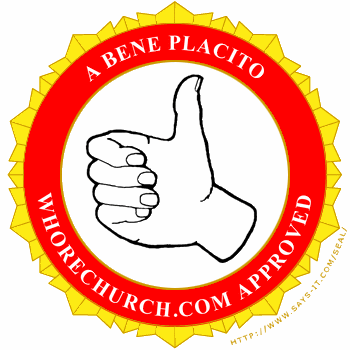Happy Halloween
Because of school commitments and commute time, etc., I'm not doing Halloween this year, regrettably (although we had a fun time at a friend's party Saturday night). But you don't have to be a workaholic just because I am.
Why did the ghost cross the road?
Newsweek has a fun article entitled "The Ghosts We Think We See."
Chief among those normal processes is our neurons' habit of filling in the blanks. The brain takes messy, incomplete input and turns it into a meaningful, complete picture. Visualize four Pac-Man-like black shapes arranged so that the wedge removed from each seems to form a corner of a white square. Neurons in the brain's visual regions, whose job is to fire when the eyes see a square's edges, do fire—even though there are no edges to see. The mind also sees patterns in random data, which is why the sky is speckled with bears and big dippers. This drive to perceive patterns—which is very useful in interpreting experimental data as well as understanding people's behavior—can also underlie such supernatural beliefs as seeing Jesus in the scorch marks and flecks of grain on a grilled-cheese sandwich. "If a stain looks like the Virgin Mary," says Hood, "then it is a divine sign and not a coincidence. If the wind in the cave sounds like a voice, then it is a voice."
...
As scientists probe deeper into the brain for what underlies superstition, they have found a surprising suspect: dopamine, which usually fuels the brain's sense of reward. In one study, two groups of people, either believers in the supernatural or skeptics, looked at quickly displayed images of faces and scrambled faces, real words and nonwords. The goal was to pick out the real ones. Skeptics called more real faces nonfaces, and real words nonwords, than did believers, who happily saw faces and words even in gibberish. But after the skeptics were given L-dopa, a drug that increases dopamine, their skeptical threshold fell, and they ID'd more faces and words as real. That suggests that dopamine inclines the brain to see patterns even in random noise. Boo!
That reminds me of the scene in A Passage to India.
An investigator discovers the true identity of a "ghost" in a courthouse in Albuquerque.
Scientists study what makes us afraid.
And here, something for the dark - my only soap opera. (Well, that's not true; I also used to watch "Santa Barbara" in the 1990s.)
Why did the ghost cross the road?
Newsweek has a fun article entitled "The Ghosts We Think We See."
Chief among those normal processes is our neurons' habit of filling in the blanks. The brain takes messy, incomplete input and turns it into a meaningful, complete picture. Visualize four Pac-Man-like black shapes arranged so that the wedge removed from each seems to form a corner of a white square. Neurons in the brain's visual regions, whose job is to fire when the eyes see a square's edges, do fire—even though there are no edges to see. The mind also sees patterns in random data, which is why the sky is speckled with bears and big dippers. This drive to perceive patterns—which is very useful in interpreting experimental data as well as understanding people's behavior—can also underlie such supernatural beliefs as seeing Jesus in the scorch marks and flecks of grain on a grilled-cheese sandwich. "If a stain looks like the Virgin Mary," says Hood, "then it is a divine sign and not a coincidence. If the wind in the cave sounds like a voice, then it is a voice."
...
As scientists probe deeper into the brain for what underlies superstition, they have found a surprising suspect: dopamine, which usually fuels the brain's sense of reward. In one study, two groups of people, either believers in the supernatural or skeptics, looked at quickly displayed images of faces and scrambled faces, real words and nonwords. The goal was to pick out the real ones. Skeptics called more real faces nonfaces, and real words nonwords, than did believers, who happily saw faces and words even in gibberish. But after the skeptics were given L-dopa, a drug that increases dopamine, their skeptical threshold fell, and they ID'd more faces and words as real. That suggests that dopamine inclines the brain to see patterns even in random noise. Boo!
That reminds me of the scene in A Passage to India.
An investigator discovers the true identity of a "ghost" in a courthouse in Albuquerque.
Scientists study what makes us afraid.
And here, something for the dark - my only soap opera. (Well, that's not true; I also used to watch "Santa Barbara" in the 1990s.)
Labels: Dark Shadows, fear, ghosts, science









4 Comments:
Oh, no! They've discovered an anti-skeptic drug! We're doooooooooomed!
If I saw something like that thing in the first clip while driving a peaceful country lane, I would indeed have to change my shorts.
Scotius
The clip of the "Horror on Country Lane" is capitally funny. Even after several viewings, when I know what to expect, it stands my neck hairs on end.
Joshua should not let his heart be troubled. We skeptics are like staph germs-drug resistant.
Scotius
He was my pastor. I will miss him
Post a Comment
<< Home